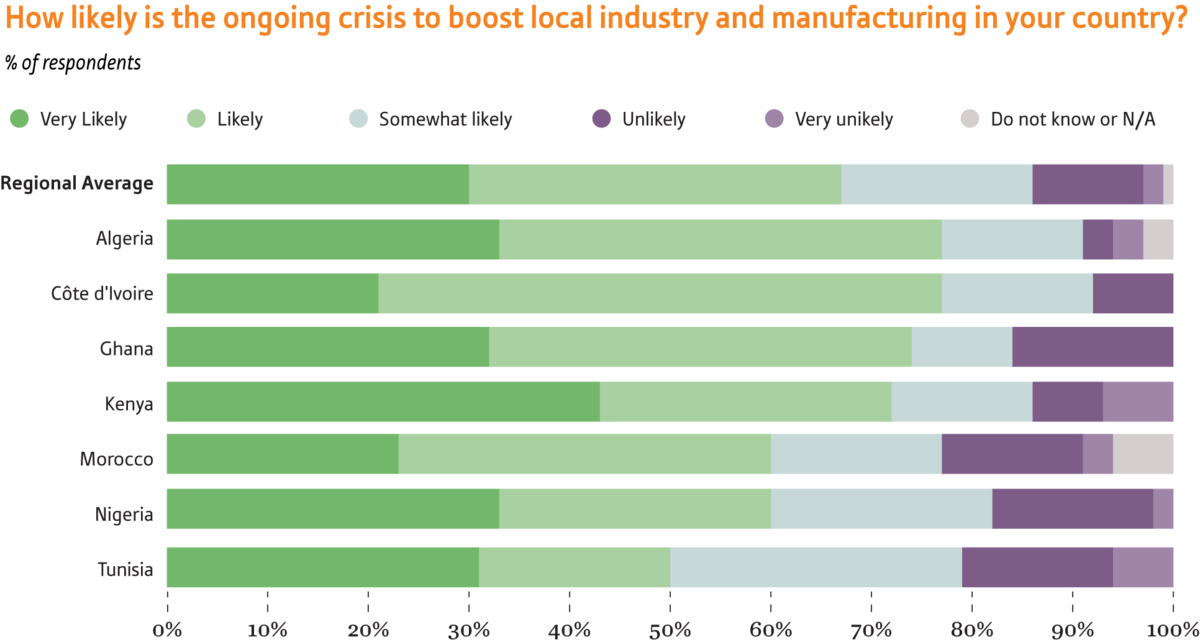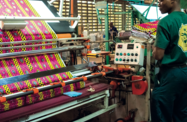– Supply chain disruptions severely slowed global industrial production
– Many companies successfully repurposed operations to meet Covid-19 needs
– Pandemic response looks set to bolster local and regional production capacity
– Firms likely to accelerate high-tech and Industry 4.0 investment

With travel restrictions, closed factories and social distancing measures in place for much of the year, 2020 was particularly challenging for industrial companies around the world. However, despite such constraints many countries were able to successfully repurpose production to meet urgent needs associated with Covid-19, while others look set to benefit from shifting trends in global supply chains.
Industry was affected from the moment Covid-19 began spreading across China, which is the world’s largest industrial producer, responsible for around 28% of global pre-crisis manufacturing output.
The closure of factories across China had a dramatic impact on supply chains and industrial activity worldwide. With China producing many parts and processed goods necessary for manufacturing elsewhere, the halt in production had a ripple effect that led to widespread supply constraints.
The challenges were exacerbated when other countries were subsequently forced to cease production as the virus reached their borders.
In parallel to this, the reduction of overall economic activity associated with lockdowns, travel restrictions and curfews meant that industrial demand dropped rapidly in many segments.
In a survey of manufacturers in Asia released by McKinsey in June, shortage of materials was cited as the main factor disrupting operations (45%), followed by a drop in demand (41%) and worker shortages (30%).
The main challenges often differed by segment. Industries such as automotive were affected by material shortages, while those producing consumer goods such as apparel, fashion and skincare suffered from a fall in demand.
Some segments also witnessed far greater losses than others. While companies producing medical supplies experienced a rapid increase in demand, those focused on the manufacture of aircraft and aviation parts were among the hardest hit.
Repurposing industry
Despite disruptions to industrial production, a number of countries were able to successfully repurpose or expand their industrial capacity to assist in the virus response.
For example, in the early stages of the outbreak many of Tunisia’s 1600 textile companies contributed to meeting the country’s need for medical supplies.
One of these was medical equipment manufacturer Consomed, which in March and April operated double shifts to produce 50,000 face masks a day.
Meanwhile, many companies in Kenya converted their operations to assist national health efforts, one example being the partnership between Haco Industries, a fast-moving consumer goods producer, and East African Breweries, which joined forces to start producing hand sanitisers for free distribution.
Elsewhere, some countries were even able to expand production to a level that allowed them to export their goods.
Vietnam took advantage of its successful containment of the virus to boost its production of personal protective equipment (PPE). This allowed the country to donate medical supplies to Europe and other Asian countries.
With 40 firms producing 7m fabric masks a day – and capacity for an additional 5.7m surgical masks – by mid-April the country had donated 550,000 masks to France, Germany, Italy, Spain and the UK, along with a further 390,000 to Cambodia and 340,000 to Laos. Furthermore, US company DuPont sold 450,000 Vietnam-made hazmat suits to the US government in the first half of 2020.
Shifts in global industry
The disruptions to industrial production and logistics caused by the virus saw countries and companies alike reassess their supply chains and domestic industrial capacity. This has led to what could be lasting structural shifts in global industry.
A number of countries have sought to bolster local processing capacity as part of a strategy aimed at developing greater self-sufficiency.
In the most recent OBG Africa CEO Survey, released in May, 66% of respondents said that the crisis was either likely or very likely to boost industry and manufacturing in their respective countries.

This figure was 33% in the Middle East, while 43.5% of CEOs in Latin America said they were likely to relocate their supply chains locally in response to Covid-19.
In a similar trend, some multinationals have sought to diversify their supply chains or move their offshore production closer to home in strategies known as China +1 and nearshoring.
In the case of China +1, companies seek to diversify production capacity by setting up factory lines in other countries, while maintaining significant operations in China.
While this process has been under way for a number of years, Covid-19 has accelerated the debate around such relocation. With low labour costs and developed industrial sectors, a number of countries in South-east Asia have emerged as natural contenders.
In particular, Vietnam has absorbed much of the manufacturing capacity that China has lost. The country has signed a raft of international trade deals and invested significantly in industrial infrastructure over the past decade. An additional consideration is that labour costs are around 50% less than in China. This has led to growth in labour-intensive industries such as textiles and apparel, as well as more advanced industries, such as electronics.
In May regional media reported that US tech giant Apple planned to shift the production of around 30% of its AirPods from China to Vietnam. This was followed by a report from international media in November that plans were also in motion to relocate iPad and MacBook production to the country.
Similarly, some companies have sought to employ the strategy of nearshoring, whereby production is shifted closer to a company’s headquarters or target market.
Countries in North Africa, such as Morocco, Tunisia and Egypt, are likely to be among the options for Europe-focused firms. For companies exporting to the US, Mexico – with its well-established industrial sector – is an attractive destination for those looking to bring industry closer to home, particularly since the signing of the United States-Mexico-Canada Agreement provided greater regulatory certainty.
“International companies already active in Mexico who are looking to relocate some or all of their manufacturing bases away from China could benefit Mexico substantially, given that it offers a sustainable local supply but at only a marginally higher cost initially,” Martin Toscano, managing director of Evonik México, told OBG in May.
Digital solutions key to future
In addition to changes in the geographical spread of manufacturing, Covid-19 looks likely to usher in significant changes to the nature of industrial production.
In particular, there will likely be an increased focus on digital solutions and high-tech manufacturing as the transition to Industry 4.0 gathers pace. This will include greater use of innovations such as artificial intelligence, virtual and augmented reality, automation and the internet of things.
In fact, according to OBG’s Gulf CEO Survey, conducted in July, 36% of CEOs said they had invested in automation software or hardware, with the figure almost 60% in the UAE.

In a sign of the importance of digital solutions, a McKinsey survey of Asian supply chain and manufacturing professionals found that 90% were planning to invest in talent for digitisation.




